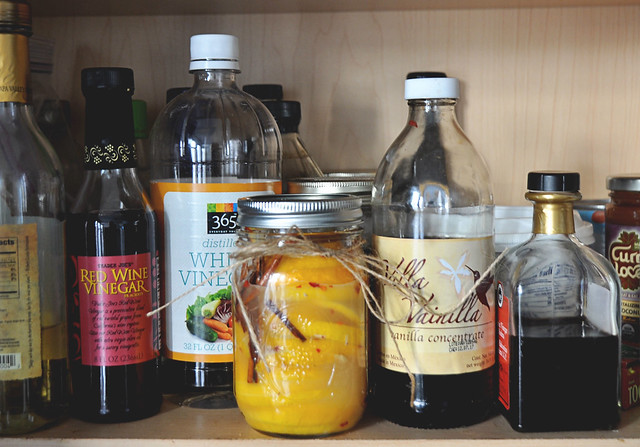Preserved Lemons

Recently, I was fortunate enough to attend a pickling class taught by chef Courtney Barnes from Bar Tartine. Bar Tartine is a great restaurant here in SF that has an Eastern European menu with heavy emphasis on pickling and fermented foods. I know what you are thinking, gross. Which is kind of what I said originally. But this class completely changed my views. We made kimchi, sauerkraut, pickles, preserved lemons and my new favorite escabeche.



Since I was not ready to stink up my kitchen by making kimchi (the funk on fresh kimchi is totally crazy) I decided to start small and make preserved lemons. The Florida girl in me told me to start here.I love all thing citrus, so I thought this would be my first pickling project. Plus this is the easiest thing to pickle - all it is, is lemons and salt. Preserved lemons are used throughout Indian, North African and Middle Eastern cooking - basically anywhere that citrus fruits originated. Way back when, pickling lemons was a way to have lemons year round but a preserved lemon needs no historic justification. The flavor is mellow yet intensely lemony, with none of the nose-tickling bright, tart flavors of a fresh lemon. You can eat any part of the preserved lemon, but the peel is where the money is at - it becomes really soft and satiny. To make the preserved lemons, basically cut up a lemon (I used Meyer but any kind will do), add salt and spices, cover with fresh lemon juice and put it in your cupboard and forget about them for a month. After a month start using them - they will last up to a year (if you don't eat them all first). I added a couple cinnamon sticks and some chili flakes, kind of because I wanted to see what would happen but those are completely optional. If you wanted to add cracked peppercorn instead, great. Or maybe bay leaves, perfect. What about cloves? - even better


What you add to the preserved lemon is completely up to you. Only rule is that it is something that tastes good or at the very least you think may taste good. So what do you do with preserved lemons you ask? Well here are some ideas and recipes: Basic rule - Any time you'd normally add some lemon zest or a squeeze of juice, you can swap in some preserved lemon Salad Dressings and Sauces: Chopped pieces of preserved lemon are perfect for a salad, but they are even better in mixed in salad dressings and sauces. You can also experiment with blending preserved lemons into pesto or into a sauce for grilled fish or meats. (Tip: preserved lemons and fish love each other. Even the Barefoot Contessa agrees with me) Salsas and Dips: Chop them up into little pieces and add them to guacamole, hummus, spicy salsas — it's all fair game. And all delicious.(You could even buy store guacamole, hummus or salsa throw the preserved lemon in, and everyone will think you made it from scratch or bought it at some fancy artisanal food store)

Pasta: Topping pasta with good olive oil, some garlic, and slices of preserved lemons is a beautiful thing. Toss on a chicken breast or some fish to feed the men in your family.

Tagines and Stews: Chicken tagine with preserved lemons is the most well know dish for these lemons, but there's a great big world of tagines out there. I love preserved lemon in chickpea stews and anything with lamb. Even if your tagine or stew doesn't call for preserved lemons specifically, I fully support a little recipe tweaking.



Or if all else fails add them to your Sunday morning Bloody Mary and drink. Mid way through my pickling I discovered that this would be a great housewarming present or even better a great holiday present. So watch out people you may just be getting preserved lemons from you know who come December.
Preserved Lemons
- 5 lemons
- 1/4 cup salt, more if desired
Optional Extras:
- 1 cinnamon stick
- 3 cloves
- 5 to 6 coriander seeds
- 3 to 4 black peppercorns
- 1 bay leaf
- Freshly squeezed lemon juice, if necessary
1. Slice the lemons
2. Place 1 tablespoon salt on the bottom of the mason jar. Pack in the lemons and push them down, adding more salt, and the optional spices between layers. Press the lemons down to release their juices and to make room for the remaining lemons. If the juice released from the squashed fruit does not cover them, add freshly squeezed lemon juice. Leave some air space before sealing the jar.
3. Let the lemons ripen in a warm place, occasionally shaking the jar to distribute the salt and juice. Let ripen for 30 days. To use, rinse the lemons, as needed, under running water, removing and discarding the pulp, if desired — and there is no need to refrigerate after opening. Preserved lemons will keep up to a year, and the pickling juice can be used two or three times over the course of a year.
